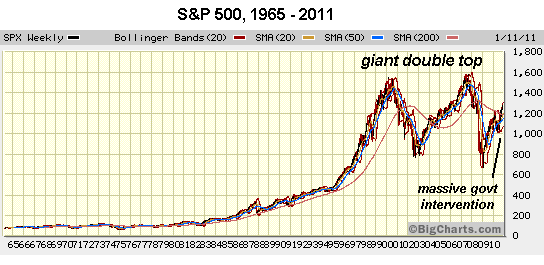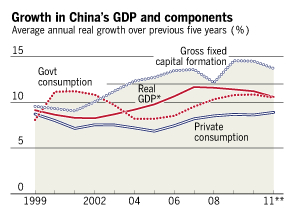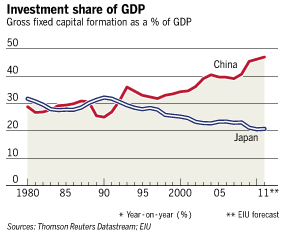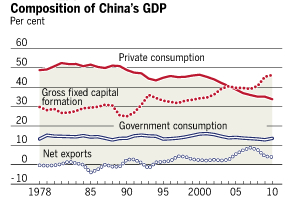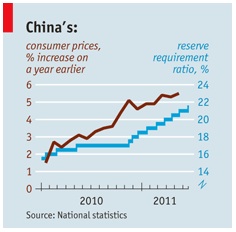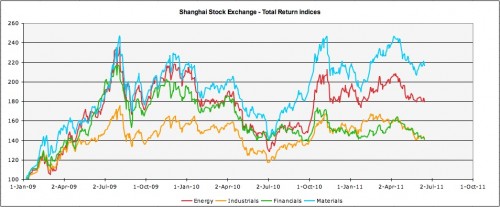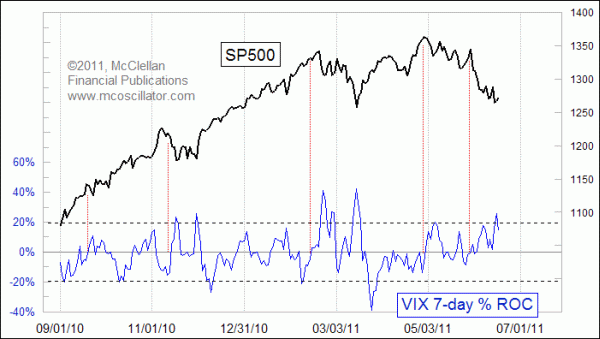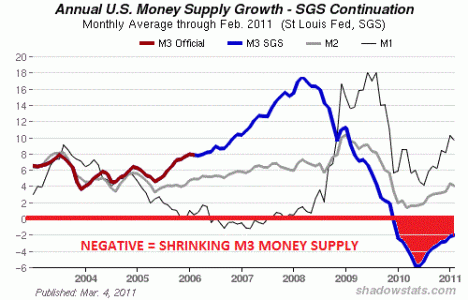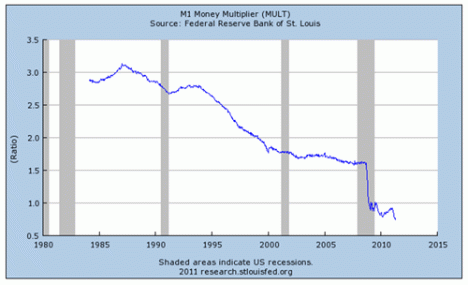By John Mauldin
Could the Eurozone Break Up?
The EMU Has Always Fallen Short…
Surely a Break-Up Remains Inconceivable?
Has it Really Come to This?
Kiev, Geneva and London
Is it possible for the Eurozone to break up? It was so inconceivable when they formed it that there is nothing in the treaty that mentions a member leaving or being removed; but now, if we’re to be honest with ourselves, we need to think about how that would work. This Friday finds me in Kiev for the first time ever, with my youngest son, Trey; and the small tour we went on last night was fascinating. Since I know not if I will ever get to this fascinating city again, I am going to write a briefer missive than usual, and it will center on my thoughts on Europe, as I have just had the pleasure of the company of a number of very diverse people, talking about the issues. Nouriel Roubini has graciously agreed to allow me use his latest private piece (very powerful analysis here), where he analyzes the question of whether the Eurozone could actually break up, so you will get the usual solid content (OK, maybe a little better), with my notes at the end. And I’ll close with some thoughts on Kiev.
But first, a quick fix. In last week’s fascinating Outside the Box by Pat Cox on the state of stem cell technology, which you really should
read, there was a link to Lifeline Skin Care cream that was faulty. It should have been
http://www.lifelineskincare.com.
Could the Eurozone Break Up? Possible Over a Five-Year Horizon
By Nouriel Roubini
The current “muddle through” approach to the eurozone (EZ) crisis is not a stable disequilibrium; rather, it is an unstable disequilibrium. Either the member states move from this disequilibrium toward a broader fiscal, economic and political union that resolves the fundamental problems of divergence (both economic, fiscal and in terms of competitiveness) within the union…
…or the system will move first toward disorderly debt workouts and eventually even break-up, with weaker members departing. Over a five-year horizon, the odds of a break-up are at least one-third.
The EMU Has Always Fallen Short…
The EMU has never fully satisfied the conditions for an optimal currency area: Synchronized economic activity and growth rates; a high level of labor and capital mobility; fiscal federalism allowing the fiscal risk sharing of idiosyncratic national shocks; and a significant degree of political union.
The hope was that the EMU’s lack of independent monetary, fiscal (the Growth and Stability Pact fiscal constraints) and exchange rate policies would lead to the acceleration of structural reforms that would in turn lead to the convergence of productivity and growth rates, rather than increased divergence.
The reality turned out to be different… Paradoxically, the early interest rate convergence became damaging as it allowed a severe lack of fiscal discipline in some countries (such as Greece and Portugal) and the build-up of asset bubbles in others (such as Spain and Ireland). Moreover the lack of market discipline delayed the necessary structural reforms and led to divergences in wage growth relative to productivity growth, and thus a rise in unit labor costs in the periphery and a loss of competitiveness that led to economic divergence between the PIIGS and the core. And the straightjacket of common monetary and currency policy exacerbated the real growth divergence at a time when structural and fiscal policies diverged.
Figure 1: Divergent Unit Labor Costs (ULCs, relative to EZ average, 1998 = 100)
 Note: ULCs are computed as the ratio between compensation per employee and real GDP per employed person. Source: European Commission
Note: ULCs are computed as the ratio between compensation per employee and real GDP per employed person. Source: European Commission
Any successful monetary union has eventually been associated with political and fiscal union. Political union in the EZ and EU has stalled and a backlash against anonymous Brussels bureaucrats imposing their views on nation states is brewing. The EU does not have a common foreign policy or a common defense policy; while economic and financial policy convergence has reached an impasse.
A fiscal union would require that a significant amount of federal/central revenues be mobilized for the provision of EU/EZ-wide public goods, but there is no mechanism or will to provide the EU with enough power to create a semi-federal system of taxation, transfers and spending. Fiscal risk-sharing also includes the sharing of losses from financial crises, which requires a central EU-based system of supervision and regulation of financial institutions rather than the current national approach. Losses would be shared throughout the EZ only if the responsibility for properly supervising and regulating financial institutions were at the central level.
Fiscal union would also require the widespread issuance of Eurobonds, where the taxes of German (and core) taxpayers backstop not only German debt but also the debt of the members of the periphery. But the German (and core) taxpayers would not accept that unless binding rules are established to ensure that periphery countries cannot again indulge in persistently and systematically large fiscal deficits; while periphery taxpayers would not accept the total loss of fiscal independence—fiscal slaves to the views of the core—that binding fiscal rules would require.
It is also clear that the heavy burden of private and public debt in a number of periphery countries— Greece, Ireland, Portugal—is so large that a debt restructuring and reduction will eventually have to occur, thus imposing—slowly or sharply—a capital loss on these periphery agents’ foreign creditors (mostly financial institutions in the core). This will exacerbate conflicts between the core and periphery as it will redistribute wealth from savers and creditors to debtor and borrowers.
Figure 2: General Gross Government Debt Projections (if fiscal adjustments go as planned, % of GDP)

And while an orderly debt reduction may at least resolve the issue of excessive debt in some insolvent economies or financial systems, the restoration of economic convergence requires the restoration of competitiveness convergence. Without it, part of the periphery will stagnate or even contract for many years to come and eventually decide to exit the monetary union and return to a system of domestic national currencies.
So, How Can Competitiveness Be Restored and Growth Resume in the Periphery?
One way would be for the euro to sharply fall in value toward—say—parity with the U.S. dollar. But with Germany being uber-competitive, the core running current-account surpluses and the ECB always more hawkish than the Fed, there is little chance that the euro would fall sharply enough to restore the competitiveness of the PIIGS.
A second solution would be to take the German reform approach: Accelerate structural reforms to increase productivity growth and keep a lid on wage growth below productivity growth to reduce unit labor costs. But this will not work: Structural reforms show their gains only in the medium term—in the short run, they can actually reduce growth as you shed labor and capital from declining firms and sectors; also, it took 15 years for Germany to reduce unit labor costs by keeping wage growth below productivity growth; if Greece, Portugal, etc. start today, the benefit in terms of competitiveness and growth will occur only in a decade, too late to be politically acceptable.
A third option is deflation: If the PIIGS could reduce prices and wages by 5% per year for five years, you would get the necessary cumulative compound fall of 30% in nominal prices/wages to restore competitiveness. The problem with the deflation route to a real depreciation is twofold.
First, deflation is associated with persistent recession and no social or political body could accept another five years of recession to reduce prices/wages by 30%; Argentina tried the deflation route to a real depreciation, but after three years of an ever-deepening recession gave up and decided to default and exit its currency board peg.
Second, even if by some miracle deflation was feasible and successful, the real value of the already-high private and public debts would rise sharply (a balance-sheet effect), forcing even-larger defaults and debt reductions. All the talk by the ECB and the EU of an “internal depreciation” is thus faulty: Even the often-heard argument that reducing public salaries would lead to a rapid real depreciation is erroneous as it would require private wages and prices to fall accordingly and would not prevent the damaging balance-sheet effects. The alleged case of a successful internal devaluation— that of Latvia—is not relevant here: Entering the crisis, its public debt was 9% of GDP, not the 100%- plus of Greece; losses from depression and deflation were taken by foreign banks dominating its banking system; and accepting a draconian 20% fall in output was politically feasible as Latvia did not want to fall into the arms of the Russian bear again. And let us not forget that the necessary fiscal austerity has—in the short run—a negative effect on economic growth; thus, it postpones the recovery of growth that is necessary to make the reforms and austerity socially and politically feasible; and that is also necessary to make the debt and deficit ratios sustainable (as falling GDP increases those ratios, despite fiscal austerity efforts).
If the euro is not going to fall sharply, if reducing unit labor cost takes too long to restore competitiveness and growth and if deflation is unfeasible or (if achieved) self-defeating, there is only one other way for the PIIGS to restore competitiveness and growth: Leave the monetary union, go back to national currencies and thus achieve a massive nominal and real depreciation. After all, in all emerging market financial crises where growth was restored, a move to flexible exchange rates was necessary and unavoidable on top of official liquidity, austerity and reform and, in some cases, debt restructuring and reduction.
Surely a Break-Up Remains Inconceivable? Not the Way We’re Going…
Of course, today, the idea of leaving the EZ sounds inconceivable, even in Athens and Lisbon. It is simply not on the table. And of course, the costs of exit would be significant: A country leaving the EZ might also be kicked out of the EU as there is no mechanism to exit EMU without exiting the EU. Also, exit would impose: 1) Trade losses on the rest of the EZ via massive real depreciation; and 2) massive capital losses on the creditor core as the sharp increase in the real value of euro debt once the new currency is sharply depreciated would either force a default on private and public euro debts, or a conversion of such euro debts into the new depreciated national currency (the equivalent of the Argentine pesification of dollar debts). The latter would be a not-so-disguised massive capital levy on the creditor core.
But scenarios that are inconceivable today might not be so far-fetched five years from now if some of the periphery economies stagnate or contract for the next five years, an outcome that is not unlikely if competitiveness is not restored, if the burden—debt overhang—of unsustainable private and public debts is not reduced and if there is little move toward more burden-sharing within the EZ via the progressive adoption of some form of a fiscal union. What has glued the EZ together has been the convergence of interest rates and low real rates sustaining growth, the hope that reforms will maintain convergence when a one size-fits-all monetary and exchange policy opposes growth and the prospect of a move toward a fiscal and political union. But now, the benefits of interest rate convergence are no longer there as: Bond vigilantes have woken up and periphery spreads will remain high for a long time; increasingly, a common
monetary policy and currency is a size that does not fit all; while fiscal union, risk-sharing and political union don’t seem to be on the horizon.
So, it is not a matter of if or whether debt restructurings will occur, but rather when (sooner or later) and show (orderly or disorderly) they occur. And even debt reduction will not be sufficient to restore competitiveness and growth. So, unless the latter can be achieved in other ways, the option for PIIGS of exiting the monetary union will become dominant as the benefits of staying in will be lower than the benefits of exiting, however bumpy or disorderly that exit may end up being.
Messy marriages lead to messy divorces, but if the marriage doesn’t work, even the threat of a messy divorce cannot keep couples together that are not a long-term match.
Ok, this just thoughtful insight in from my friend Richard Yamarone, chief economist for Bloomberg. It is part of an email thread where a number of us were commenting on the recent swoon in the market and how much of it could be tied to Greece?
“When Greece folds like a wet gyro, and it will, the real game begins. It’s no different that when Bear was taken over by JP Morgan, the markets ignored the Bear Stearns story (the media didn’t). When all business televison and newspapers did stories about the $2 price tag on Bear, investors were saying ‘who’s next?’ The fact that Bear went down was old history — most knew it was going to happen. The focus was where do we turn next?
“The Greece story is like the sick uncle at the annual family picnic…Mom would say, go take a plate of food to Uncle Larry, he’s really sick. This goes on for three, five, ten years. Then Uncle Larry dies. Everyone turns to each other shocked, ‘I can’t believe that Uncle Larry died!’0 What’s so surprising? Everyone knew, he was dying for over a decade. That’s what’s going to happen to Greece…The financial press will say Whoa, Greece folded, defaulted, whatever. But the markets will say, ‘Who’s next?’ Then the entire EU will come under pressure. I don’t believe they will exist in two year’s time. – Rich”
Has it Really Come to This?
There are stories and movies where the end of the plot is sad. “Has it really come to this? After all our dreams and hard work and this is what we get?” But this is real. And worse, there are so many people who have been saying “I told you so” for so many years. It is like watching a really bad play and not being able to leave, and knowing you are going to have to watch it the next day and pay even more for the tickets!
The headline on my European Wall Street Journal this morning says “Greece Faces Demands for Deeper Cuts.” On TV, 20,000 people are surrounding the Greek parliament. The “troika” is meeting this weekend and you can bet Bernanke and Geithner have people there with second row seats, discreetly placed. My bet? They find the measly 12 billion euros to paper over the current crisis.
Then comes the July meeting. That’s when it gets interesting. They are going to need at least 150 billion euros (for a total of 340 billion, give or take) to get this done for a few years. Joan McCullough sent me these really great paragraphs:
“Lemme tell you something right now. Yesterday, all these warring factions in Europe went from a hardcore game of “chicken” to blinking. Each and every one backpedaled. And the spin became “broad-based cooperation” to get it done. Because they were facing meltdown. And I’m thinkin’, the next thing we’re gonna’ see is the Greek Army and then it’ll be all over. I am sure all this was not lost on the rest of the world’s leadership who are watching Greece unfold from the edge of their seats.
“That same backpedaling baloney has continued this morning now to where Merkel is tryin’ to smooch it up with the ECB. They’re talkin’ Vienna-style resolution. Again. (That’s the one where the paper matures but the banks have formed a consortium and have agreed collectively to let the bet ride, i.e., roll over. I guess a roll-over at gunpoint does not count as a default. Whatever. We are so far into delusional, I’m actually enjoying it now. You?)”
Let me repeat myself. Reading and listening to people over here I get the distinct feeling that the politicians at these meetings will not be the same ones at a similar meeting in two years. This is not a happy group of voters. There are no good choices. It is between choosing between pretty bad today and really bad in a few years and a disastrous choice forced on the world after that.
Let me suggest to my fellow US citizens that you really pay attention to this. If you think that we can somehow avoid making difficult choices by kicking the can down the road, watch the European theater. And coming to a theater near you in a few years will be a real Japanese monster movie. Godzilla on steroids.
I think Nouriel is being optimistic, which makes me nervous, because he is supposed to be Dr. Doom. I don’t like taking a more pessimistic stance than him, but I just can’t see five years. The math just doesn’t work. Not the accounting math for Greece (or Ireland) and certainly not the political math.
But he may be right in this. There are no agreed upon ways to leave the Eurozone and return to a national currency. The legal pain is horrible to contemplate. It may take a very long time for the participants to work out what can only be a messy divorce.
Me? I would tell the Greeks to figure out their own problems. They got themselves into it. If they want to stay with the euro, fine. But we are not going to bail you out. We are not throwing good money after bad. Europe should take the money they are giving to Greece (which is just going to default later anyway) and bail out their financial system directly. Let bondholders lose and realize they actually have to pay attention to what they invest in. Are these guys creditworthy?
It is like loaning your profligate brother-in-law money. You do it to keep peace in the family, but there comes a point. It helps neither him nor you.
Kiev, Geneva, and London
As noted above, I am in Kiev, Ukraine with youngest son, Trey, spending a fascinating time with friends who have flown in from all over the world for a class reunion of an executive course we did two years ago at Singularity University in the Silicon Valley. Beautiful city, lots of orthodox churches that have been restored, new buildings and architecture among the Soviet-era dullness.
There is a very vibrant business community, judging from the people I’m meeting. But there is also a melancholic note. Ukraine’s population is decreasing faster than that of any nation in the world. It is down from 54 million in 1991 to less than 46 million today, and still dropping. The birth rate is about the lowest anywhere, and the young people are leaving the country. Our tour guide says that so many young people have no hope.
But, as you walk the streets, people seem happy and moving with purpose. The universities are full. The people are very friendly. I need to come again and explore some more. Sigh. There are so many places that deserve some attention, and so little time.
I am off to Geneva on Sunday and then to London on Wednesday night (after we take a tour of CERN), where I will co-host Squawk Box London for two hours. Then it’s on to the airport and home (mostly) for the next two months.
Somehow, I figured out how to be in Texas in July and August. Timing was never my thing.
I see a river boat tour tonight, shooting Soviet-era guns with my son tomorrow, and lots of great conversation in my very near future. Have a great week.





